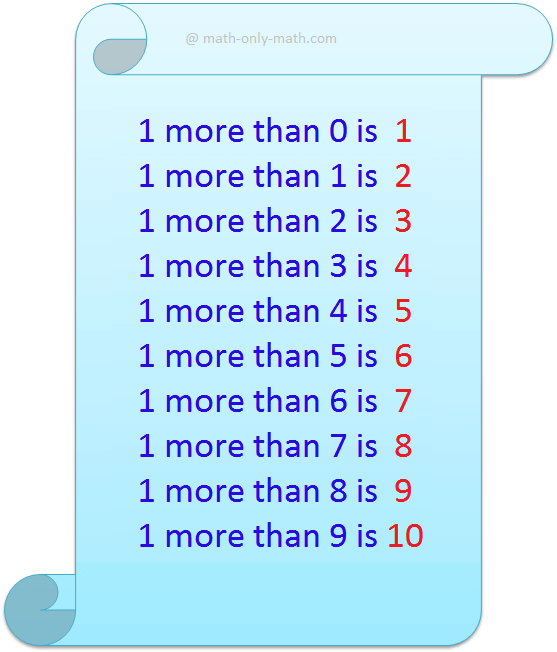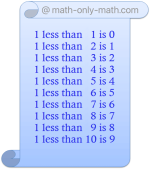Problems on Slope and Intercept
We will learn how to solve different type of problems on slope and intercept from the given equation.
1. Find the slope and y-intercept of the straight-line 5x - 3y + 15 = 0. Find also the length of the portion of the straight line intercepted between the co-ordinate axes.
Solution:
The equation of the given straight line is,
5x - 3y + 15 = 0
⇒ 3y = 5x + 15
⇒ y = 53x + 5
Now, comparing equation y = 53x + 5 with the equation y = mx + c we get,
m = 53 and c = 5.
Therefore, the slope of the given straight line is 53 and its y-intercept = 5 units.
Again the intercept form of the equation of the given straight line is,
5x - 3y + 15 = 0
⇒ 5x - 3y = -15
⇒ 5x−15 - 3y−15 = −15−15
⇒ x−3 + y5 = 1
Clearly, the given line intersects the x-axis at A (-3, 0) and the y-axis at B (0, 5).
Therefore, the required length of the portion of the line intercepted between the co-ordinates axes
= AB
= √(−3)2+52
= √9+25 units.
= √34 units.
2. Find the equation of the straight line passes through the point (2, 3) so that the line segment intercepted between the axes is bisected at this point.
Solution:
Let the equation of the straight line be xa + yb = 1, which meets the x and y axes at A (a, 0) and B (0, b) respectively. The coordinates of the mid-point of AB are (a2, b2). Since the point (2, 3) bisects AB, therefore
a2 = 2 and b2 = 3
⇒ a = 4 and b = 6.
Therefore, the equation of the required straight line is x4 + y6 = 1 or 3x + 2y = 12.
More examples to solve the problems on slope and intercept.
3. Find the equation of the straight line passing through the points (- 3, 4) and (5, - 2); find also the co-ordinates of the points where the line cuts the co-ordinate axes.
Solution:
The equation of the straight line passing through the points (- 3, 4) and (5, - 2) is
y−4x+3 = 4+2−3−5, [Using the form, y - y1 = y2−y1x2−x1 (x -
x1)]
⇒ y−4x+3 = 6−8
⇒ y−4x+3 = 3−4
⇒ 3x + 9 = - 4y + 16
⇒ 3x + 4y = 7 ………………… (i)
⇒ 3x7 + 4y7 = 1
⇒ x73 + y74 = 1
Therefore, the straight line (i) cuts the x-axis at (73, 0) and the y-axis at (0, 74).
● The Straight Line
- Straight Line
- Slope of a Straight Line
- Slope of a Line through Two Given Points
- Collinearity of Three Points
- Equation of a Line Parallel to x-axis
- Equation of a Line Parallel to y-axis
- Slope-intercept Form
- Point-slope Form
- Straight line in Two-point Form
- Straight Line in Intercept Form
- Straight Line in Normal Form
- General Form into Slope-intercept Form
- General Form into Intercept Form
- General Form into Normal Form
- Point of Intersection of Two Lines
- Concurrency of Three Lines
- Angle between Two Straight Lines
- Condition of Parallelism of Lines
- Equation of a Line Parallel to a Line
- Condition of Perpendicularity of Two Lines
- Equation of a Line Perpendicular to a Line
- Identical Straight Lines
- Position of a Point Relative to a Line
- Distance of a Point from a Straight Line
- Equations of the Bisectors of the Angles between Two Straight Lines
- Bisector of the Angle which Contains the Origin
- Straight Line Formulae
- Problems on Straight Lines
- Word Problems on Straight Lines
- Problems on Slope and Intercept
11 and 12 Grade Math
From Problems on Slope and Intercept to HOME PAGE
Didn't find what you were looking for? Or want to know more information about Math Only Math. Use this Google Search to find what you need.
Recent Articles
-
One More than Numbers upto 10 | Counting One More | Learn 1 more Than
Apr 11, 25 04:09 PM
1 more than means we need to add or count one more number to the given numbers. Here, we will learn counting one more than upto number 10. Examples of counting 1 more than up to number 10 are given as… -
One Less than Numbers upto 10 | Counting One Less | Learn 1 Less Than
Apr 11, 25 04:07 PM
What is one less than? 1 less than means we need to subtract or count one less number of the given numbers. Here, we will learn counting one less than upto number 10. Examples of counting 1 less than… -
Properties of Multiplication and Division of Fractions Worksheet | Ans
Apr 10, 25 03:17 PM
In properties of multiplication and division of fractions worksheet you will get different types of questions based on properties of multiplication of fractional numbers and properties of division of… -
Word Problems on Fraction | Math Fraction Word Problems |Fraction Math
Apr 09, 25 01:44 AM
In word problems on fraction we will solve different types of problems on multiplication of fractional numbers and division of fractional numbers. -
Multiply a Number by a 2-Digit Number | Multiplying 2-Digit by 2-Digit
Apr 08, 25 01:13 PM
How to multiply a number by a 2-digit number? We shall revise here to multiply 2-digit and 3-digit numbers by a 2-digit number (multiplier) as well as learn another procedure for the multiplication of…




New! Comments
Have your say about what you just read! Leave me a comment in the box below. Ask a Question or Answer a Question.